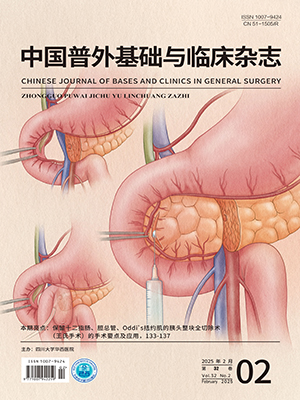Objective To discuss the relationship between the efficiency of bile duct drainage and the postoperative liver functional recovery and the prognosis of hilar cholangiocarcinoma.
Methods We studied retrospectively 58 cases of hilar cholangiocarcinoma which entered our department between June 1987 and October 1998. The postoperative liver functional recovery and mortality and morbidity between unilateral (n=27) and bilateral (n=31) bile duct drainage groups were compared.
Results The liver function in bilateral drainage group was nearly normal within 6 weeks after operation. The ALb level of unilateral drainaged patients recovered gradually to normal after operation, and the TBIL and ALT decrease nearly to the normal range within 6 weeks after operation. The AKP decreased within 2 postoperative weeks, then steadily increased. The differences of perioperative complication rate and mortality of the two groups showed no significance.
Conclusion The data showed that the liver function can recover to some extent by unilateral bile duct drainage, and unilateral drainage operations are the choice for hilar cholangiocarcinoma that can not be excised now.
Citation: BAI Gang,MA Yuangui.. RELATIONSHIP BETWEEN BILE DUCT DRAINAGE AND THE PROGNOSIS OF HILAR CHOLANGIOCARCINOMA. CHINESE JOURNAL OF BASES AND CLINICS IN GENERAL SURGERY, 2000, 7(2): 89-90. doi: Copy
Copyright © the editorial department of CHINESE JOURNAL OF BASES AND CLINICS IN GENERAL SURGERY of West China Medical Publisher. All rights reserved




